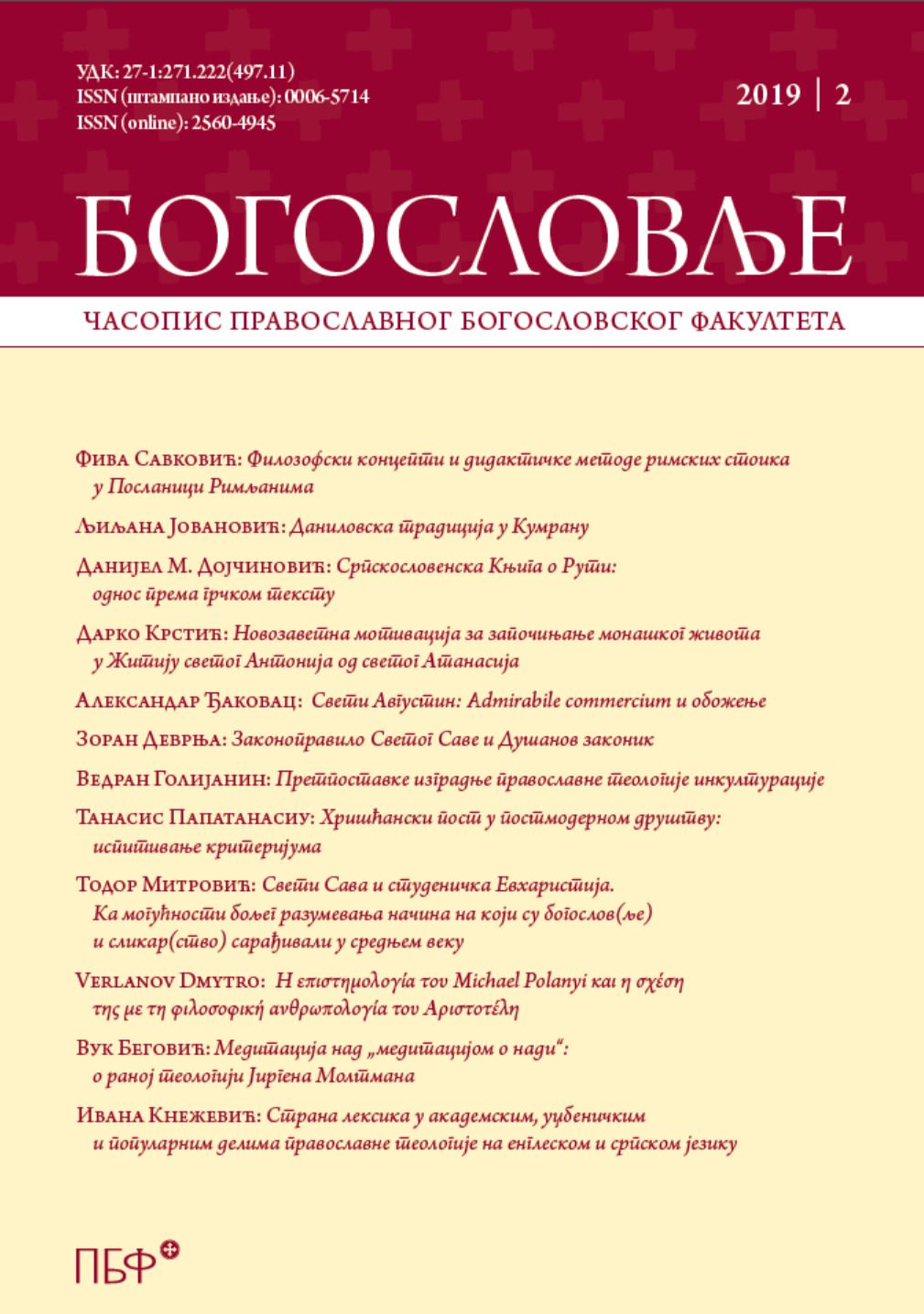Свети Сава и студеничка Евхаристија
Saint Sava and Studenica ’Eucharist’
Towards the Better Understanding of the Collaboration between Theology and Arts in the Middle Ages
Author(s): Todor MitrovićSubject(s): Theology and Religion
Published by: Православни богословски факултет Универзитета у Београду
Keywords: византијско сликарство; Студеница; Свети Сава; Причешће апостола; Евхаристија; благослов; епиклеза;
Summary/Abstract: While there can be no doubt that Saint Sava influenced the execution of frescoes from the Studenica Monastery catholicon, the exact ways his erudition and creativity could have been projected to this art are yet staying a partly answered theoretical topic. Analysis of a totally atypical depiction of Communion of Apostles from the altar of this church will foster some new conclusions in this direction. Namely, the central section of this composition is specific by the fact that Christ is not represented as usual, twice (in respective phases of apostles’ participation of the Communion), but only once, in the moment of consecration of Eucharistic gifts depicted on altar-table before him. But this is not the only peculiarity of the very composition. What is much more intriguing is the fact that Christ’s widespread hands are not represented in the symmetrical manner. His right hand is depicted above the paten (with bread), in the recognizable gesture of blessing, while his left hand is simply pointing towards the chalice (with wine), with all fingers extended. Supposing that byzantine artists, commissioners, and beholders well recognized the gesture of blessing, in art and in liturgy — which implies that its not-representing on left hand couldn’t be simply an omission — this research is trying to explain the meaning of the difference between gestures of Christ’s hands. Taking into account that simultaneous representing of different phases of Eucharistic warship was an intrinsic aspect of Byzantine liturgical iconography, a hypothesis that we’re dealing with the same kind of logic here imposed itself. This brings us to the conclusion that the two key consecratory moments of the Canon of Eucharist — the reading of words of institution and the epiclesis — are represented on the Studenica fresco. While the second was easy to represent by the gesture of blessing, well recognizable in its liturgical context, the first could have been illustrated by representing the pointing hand. Whether this was an illustration of the very ritual action — which might have existed even before its official entrance to the liturgical books in XVIIcentury Ukraine — or was it instantly invented imaginary pictorial means to represent one important phase of the Eucharist, numerous arguments speak in favor of interpreting this gesture as representation of the moment when words “Take, eat[…] Drink ye all of this […]” are pronounced. Finally, the subtlety of this pictorial invention and refined liturgical erudition standing behind it — together with its accompanying interpretative potentials in the context of burning disputes with Latinliturgical piety — point directly towards the personality of the first Archbishop of Serbia as its true coauthor, the one who influenced its creation in a most profound manner. ▶ Key words: Byzantine art, Studenica, Saint Sava, Communion of Apostles, Eucharist, blessing, epiclesis.
Journal: БОГОСЛОВЉЕ
- Issue Year: 78/2019
- Issue No: 2
- Page Range: 137-179
- Page Count: 43
- Language: Serbian

